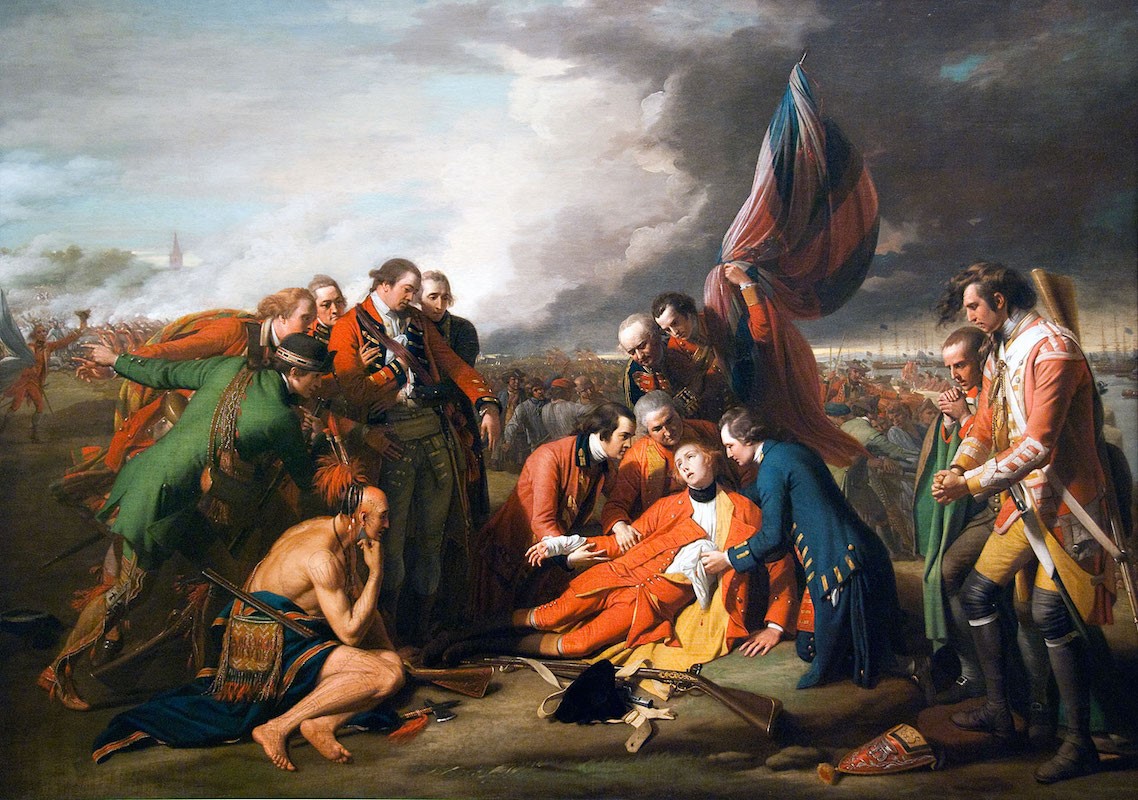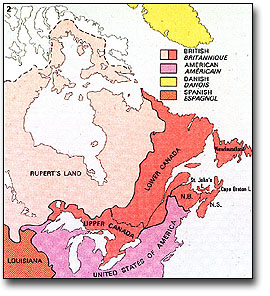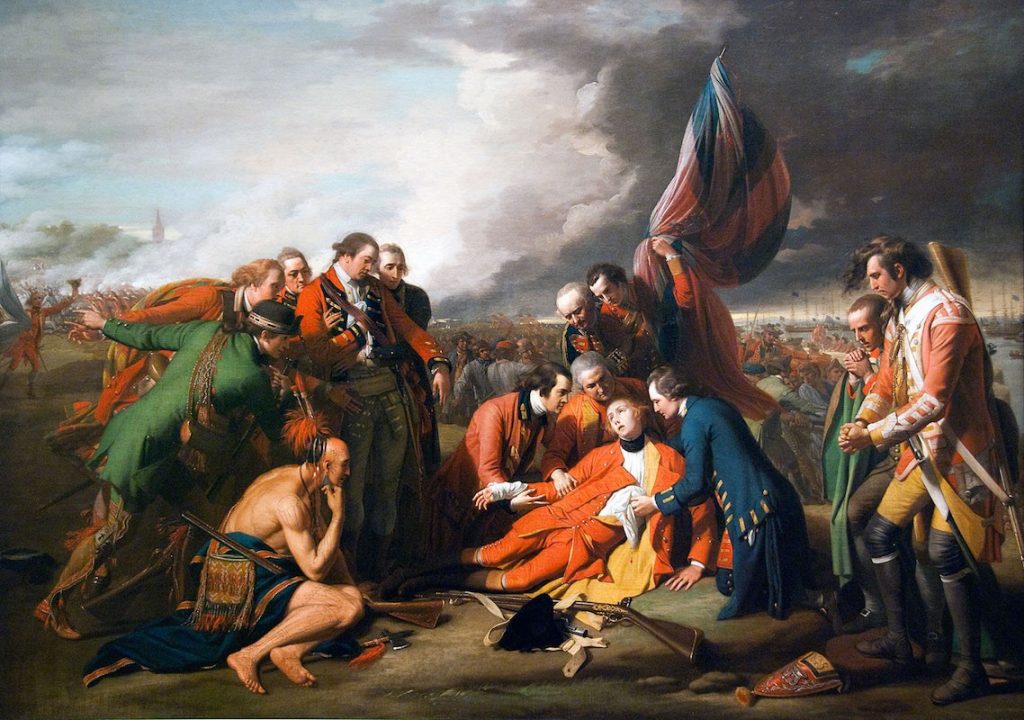
Lesson 2 by Luca Schiavone
Lesson Title: Perspectives on the Seven Years War and in the Treaty of Paris
TIME: approximately 80 minutes
EXPECTATIONS:
- A1. Application: Analyze aspects of the lives of various groups in Canada between 1713- 1800, and compare them to the lives of people in present day Canada (FOCUS ON: Continuity & Change; Historical Perspective)
- A2 Inquiry: use the historical inquiry process to investigate perspectives of different groups on some significant events, developments, and/or issues related to the shift in power in colonial Canada from France to Britain
- A2.4 Inquiry: interpret and analyse information and evidence relevant to their investigations, using a variety of tools
- A3. Understanding Historical Context: Describe various significant events, developments, and people in Canada between 1713-1800, and explain their impact (FOCUS ON: Historical Significance; Cause & Consequence)
ASSESSMENT:
- Day 1: Students will find an example of its lasting effects on modern society by searching injustices facing modern society that they believe connect to the Seven Years War and/or Treaty of Paris.
- Day 2: Students present their chosen issue facing Indigenous people as a result from the Seven Years War and/or Treaty of Paris.
PRIOR KNOWLEDGE REQUIRED (of Students):
- Understanding from Grade 5 of relations between French, British, and Indigenous groups.
- Students will be aware of primary and secondary source analysis.
- Awareness of who the Seven Nations are.
RESOURCES
- National Gallery of Canada: Death of Wolfe painting by Benjamin West https://www.gallery.ca/en/see/collections/artwork.php?mkey=5363
- Library of Congress: Treaty of Paris (primary document) https://www.loc.gov/rr/program/bib/ourdocs/paris. html
- Smithsonian: Iroquois Chief Speech (primary document): http://www.smithsoniansource.org/display/prim arysource/viewdetails.aspx?TopicId=&PrimarySo urceId=1188
- Indigenous and Northern Affairs Canada: Treaty of Peace and Friendship 1760 https://www.aadnc- aandc.gc.ca/eng/1100100028596/1100100028597
- “The Seven Years War: Crash Course World History” https://www.youtube.com/watch?v=j0qbzNHmfW0
TEACHING / LEARNING TASKS DURATION (APPROX) 2 40 minute classes
Minds On: 10 mins
- In groups of three to four, students will reflect on the elephant cartoon by answering the question, “What is happening here? And why does everyone have a different answer?”
- Students write down their answer(s) on a chart paper.
- As a group, establish that each scientist has a different perspective à define as a class
Action: Day 1 – 30 mins, Day 2 – 35 mins
- Day 1: Students are broken up into groups; and answer their assigned reading from each perspective (see Appendices for readings, and chart paper lay out). Groups will post their charts around the classroom, which will be revisited the day after.
- Day 1: Students, in their groups, will find an example of its lasting effects on modern society by searching injustices facing modern society that they believe connect to the Seven Years War and/or Treaty of Paris.
- Day 2: Students present their chosen issue facing Indigenous people as a result from the Seven Years War and/or Treaty of Paris.
Consolidation – Day 2: 5 mins
- Day 2: How much power did their people/group have in comparison to the others and why? Is your group’s perspective valued? Why or why not?
HOMEWORK
- Reverse classroom: students watch “The Seven Years War: Crash Course World History” completing a double entry journal (divided by a vertical line); on the left side of the page students take informational notes and on the right students right down their personal reactions.
APPENDICES
Important Perspectives on the Treaty of Paris 1763 Organizer
| Name of People / Group | Describe the power this people/ group held in 1763. | Was this people/group’s perspective valued? Why or why not? |
| BRITISH | ||
| FRENCH | ||
| Seven Nations (French or English alliance) |
Document 1: The Treaty of Paris (Who holds the power?)

Document 2: The Death of General Wolfe by Benjamin West
Think: How are British/French/ Indigenous People being portrayed here?

Document 3: An Iroquois leader’s speech at a treaty meeting
Think: Was the relationship between the Iroquois and European traders good for the tribe?
Scarrooyady, an Iroquois leader, at a 1753 treaty
Scarrooyady’s proclamation to colonist traders is indicative of the attitude that many Native Americans took to the introduction of alcohol by colonists into Native tribes. Native Americans, who had not been previously exposed to rum, rapidly developed addictions, which led to dependencies on colonist traders. Many Natives saw the introduction of alcohol, as well as gunpowder, as extremely detrimental to their continued existence.
“Your traders now bring us scare any Thing but Rum and Flour. They bring us little Powder and Lead, or other valuable Goods. The rum ruins us. We beg you would prevent its coming in such Quantities, by regulating the Traders. . . . We desire it be forbidden, and none sold in the Indian Country. “
Credit: Scarrooyady, an Iroquois leader, at a 1753 treaty. http://www.smithsoniansource.org/display/primarysource/viewdetails.aspx?TopicId=&P rimarySourceId=1188

